Learning With Lagun: Choosing Lathe Tooling


Lathes are one of humanity’s oldest machines. In fact, the earliest evidence of lathes dates all the way back to 1300 BC. As they’ve evolved, their range of applications has too. From turning to boring, there’s a wide range of machining that can now be done.
You may be asking yourself, how are lathes able to accomplish so much? As any machinist can tell you, it’s all about the tooling. Nowadays lathe tools come in a variety of materials, shapes, and sizes. There’s a lot to consider when choosing the right one and knowing where to begin can be daunting. In this post we’re taking you back to the basics with a brief refresher on tooling, so you can feel confident before you start turning.
Types Of Tools
We’ll begin by focusing on three of the most common tool types; high speed steel (HSS), brazed carbide tip, and insert. Before you choose your tool type you should consider the material of your workpiece. Your cutting tool must be harder than the material being removed, therefore what it’s made of matters. Each tool type has a specific alloy composition suited for different jobs.
HIGH SPEED STEEL
High speed steel tools are composed of a popular alloy. This material combines tungsten, chromium, vanadium and sometimes cobalt. Its popularity stems from its cost efficiency, as well as its durability and resistance to wear and heat. An easy to grind tool, the HSS produces deep and quick cuts on all but the strongest alloys, making it ideal for everyday tooling.
HSS tools typically come as a formless shank. In order to create a usable cutting edge, the machinist grinds one into shape. For that reason, they are highly customizable. Additionally, it can withstand high tension levels, making it less prone to breaking. This durability means it’s possible to grind a sharper cutting edge than on other tool types, such as insert tools.
Although versatile and affordable, this tool type can wear down quickly. Due to this the operator needs to change HSS tools out more frequently than other tool types. Additionally, this can produce inferior quality finishes and have an adverse impact on production output.
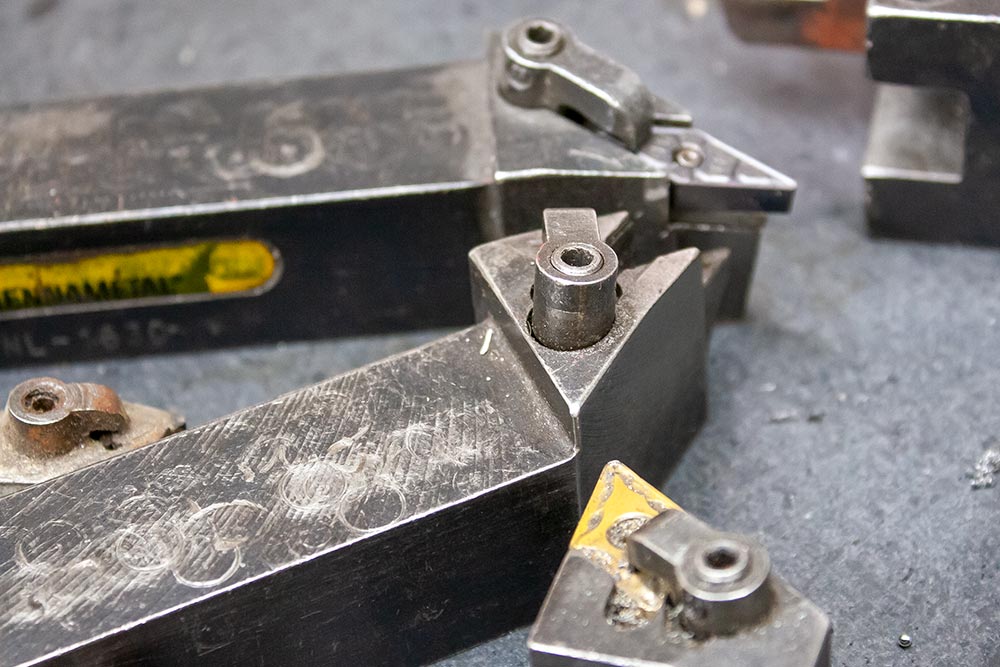
BRAZED CARBIDE
Brazed carbide tools are an in-between of HSS and carbide Insert tools. Like an HSS these tools come as a formless shank, however, these tools come tipped with carbide. The cutting edge of these brazed tools provides the same strength as a carbide tool, as well as extreme heat and wear resistance. The biggest advantage of using brazed carbide tools is its high abrasion resistance, which can be upwards of 100 times stronger than steel. This means it’s able to withstand very high RPM’s.
As strong as these tools are, like an insert tool, the carbide tip is more brittle than an HSS. They can also be difficult to grind. Unlike an HSS which the operator can grind on something as simple as a wet stone, brazed carbide requires tougher grinding methods.
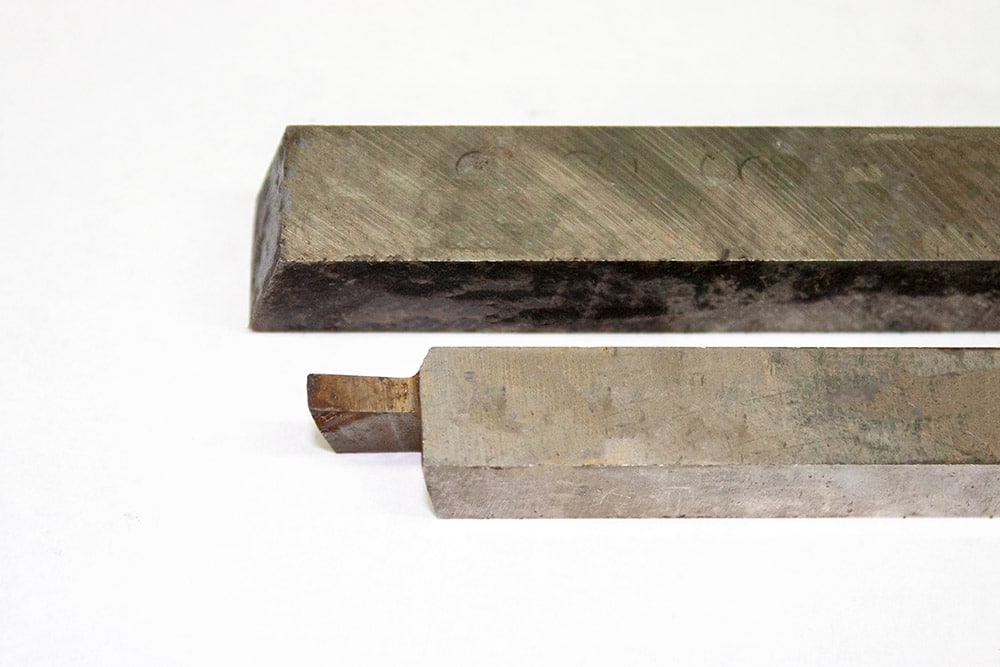
INSERT TOOLS
These tools come with four basic components; the tool shank/holder, a clamp, a screw and an insert. Tool inserts and their holders are composed of carbide, a material that comes as a powder pressed into a form. Unlike an HSS tool, the cutting edge of these tools comes prefabricated.
These tools have a much higher tolerance for heat and wear than HSS, and can maintain a sharper cutting edge for longer. Although unable to work at the same high speeds as an HSS tool, carbide tools can withstand higher RPM’s. Furthermore, because insert tools come prefabricated, each insert produces a consistent finish. This consistency leads to higher quality finishes, making it an ideal tool for manufacturing.
Something to keep in mind when considering insert tools is their lack of versatility. Each insert can only perform one specific tooling methodology. Furthermore, insert tool holders only fit one type of insert. This means the operator must acquire a different insert and holder for each type of tooling.
This tool type also lacks durability. Insert tools maintain sharpness longer but are brittle and prone to chipping. Usually, a machinist will fix this by turning the insert to a clean, unbroken edge. However, because they are difficult to grind into shape, once each side of the insert is chipped it must be replaced. Over time these factors make insert tools a more costly choice.
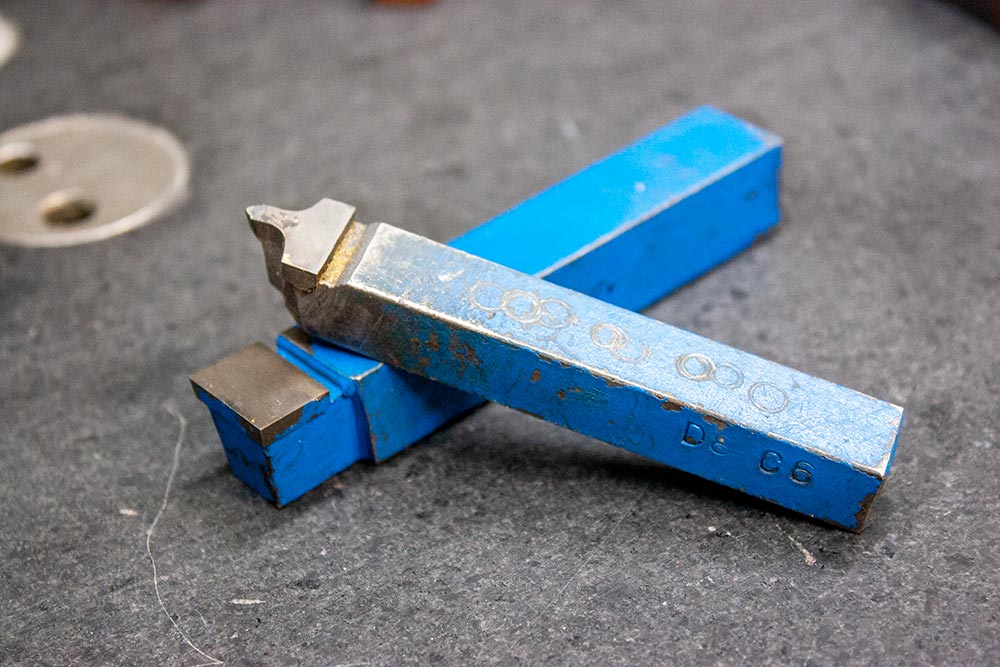
HIGH SPEED STEEL
High speed steel tools are composed of a popular alloy. This material combines tungsten, chromium, vanadium and sometimes cobalt. Its popularity stems from its cost efficiency, as well as its durability and resistance to wear and heat. An easy to grind tool, the HSS produces deep and quick cuts on all but the strongest alloys, making it ideal for everyday tooling.
HSS tools typically come as a formless shank. In order to create a usable cutting edge, the machinist grinds one into shape. For that reason, they are highly customizable. Additionally, it can withstand high tension levels, making it less prone to breaking. This durability means it’s possible to grind a sharper cutting edge than on other tool types, such as insert tools.
Although versatile and affordable, this tool type can wear down quickly. Due to this the operator needs to change HSS tools out more frequently than other tool types. Additionally, this can produce inferior quality finishes and have an adverse impact on production output.

BRAZED CARBIDE
Brazed carbide tools are an in-between of HSS and carbide Insert tools. Like an HSS these tools come as a formless shank, however, these tools come tipped with carbide. The cutting edge of these brazed tools provides the same strength as a carbide tool, as well as extreme heat and wear resistance. The biggest advantage of using brazed carbide tools is its high abrasion resistance, which can be upwards of 100 times stronger than steel. This means it’s able to withstand very high RPM’s.
As strong as these tools are, like an insert tool, the carbide tip is more brittle than an HSS. They can also be difficult to grind. Unlike an HSS that can be ground on something as simple as a wet stone, brazed carbide requires tougher grinding methods.

INSERT TOOLS
These tools come with four basic components; the tool shank/holder, a clamp, a screw and an insert. Tool inserts and their holders are made of carbide, a material that comes as a powder pressed into a form. Unlike an HSS tool, the cutting edge of these tools comes prefabricated.
These tools have a much higher tolerance for heat and wear than HSS, and can maintain a sharper cutting edge for longer. Although unable to work at the same high speeds as an HSS tool, carbide tools can withstand higher RPM’s. Furthermore, because insert tools come prefabricated, each insert produces a consistent finish. This consistency leads to higher quality finishes, making it an ideal tool for manufacturing.
Something to keep in mind when considering insert tools is their lack of versatility. Each insert can only perform one specific tooling methodology. Furthermore, insert tool holders only fit one type of insert. This means the operator must acquire a different insert and holder for each type of tooling.
This tool type also lacks durability. Insert tools maintain sharpness longer but are brittle and prone to chipping. Usually, a machinist will fix this by turning the insert to a clean, unbroken edge. However, because they are difficult to grind into shape, once each side of the insert is chipped it must be replaced. Over time these factors make insert tools a more costly choice.

Lathe Tooling
Now that we’ve gone over the most common types of tools, let’s look at their tooling functions. There are 9 common cutting operations that a machinist can perform on a lathe; turning, boring, chamfering, knurling, parting, threading, facing, grooving and forming. Each type requires the tool to be uniquely shaped to perform its specific function.
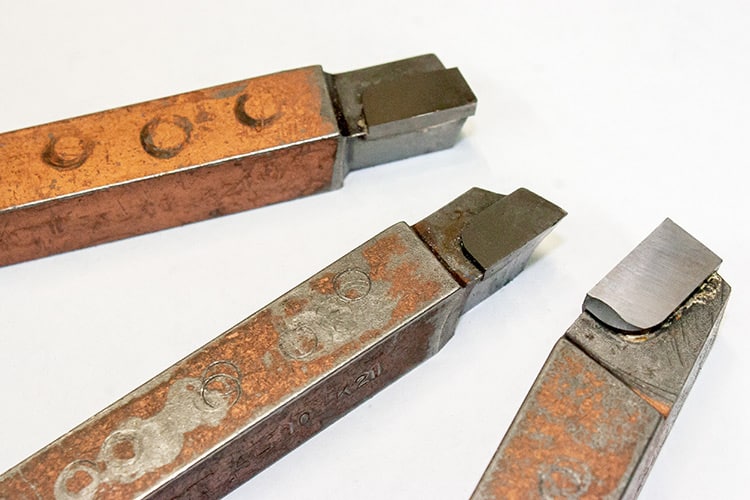
TURNING
Turning tools are ideal for quickly and easily removing material. These tools come in two types; roughing and finishing. Roughing tools are capable of withstanding high cutting pressures, and with their small clearance angles, can remove a lot of material at once. In contrast, finishing tools come with wider clearance angles, making them ideal for creating smooth, quality finishes.
FACING
Facing is the process of removing material from the end or shoulder of a workpiece using a special tool to produce a smooth finish. Using these tools on a lathe with constant surface speed can greatly enhance this process. Additionally you can use the same tool used for turning to face repositioning it the lathes tool holder.
KNURLING
Knurling is a process that transforms a workpiece’s surface in order to make it easier to handle. These tools have steel wheels with teeth that create patterns when pressed into a workpiece. The most common pattern made with a knurling tool is a diamond pattern.
BORING
You can use boring bars for enlarging the inside diameter of a workpiece, and to cut a workpiece’s dimension to a tight tolerance. The most common type is the solid boring bar. These tools are typically made of carbide and best suited for making stable cuts.
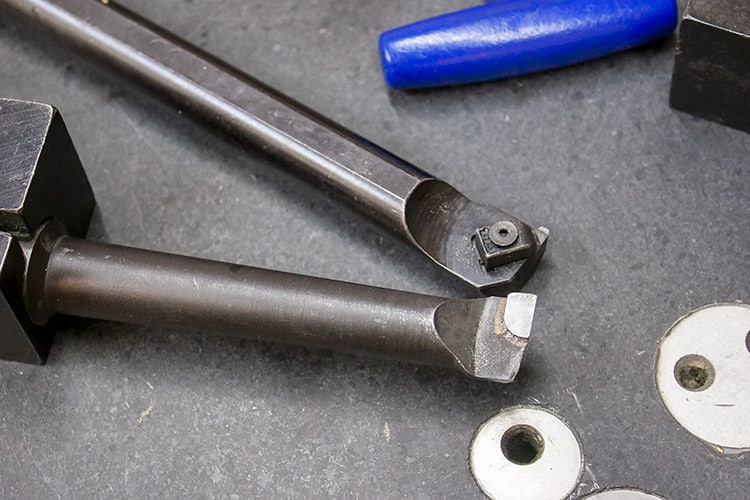
CHAMFERING
Chamfering is the process of beveling the extreme end of a workpiece. An operator can performs this type of tooling with the same form tool used for taper turning. Chamfering is an essential operation after thread cutting that allows the nut to pass freely on the threaded workpiece. Usually, this cut is 45° angle to remove a 90° angle and is also a useful deburring process.
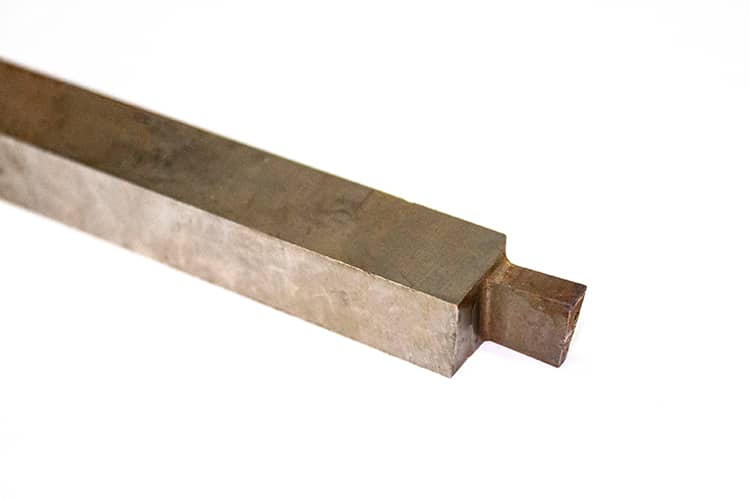
PARTING
These narrow-bladed tools are typically used to remove the finished part of a workpiece from its stock. The operator directly applies the tool to the workpiece which slices a groove all the way through it, cleanly cutting the material away.

FORMING
Form tools are handy for making the same shape repeatedly. The cutting edge of the tool is typically ground into a flat or circular shape, when used on lathes. However, you can shape this versatile tool into whatever groove, undercut, or thread the operator wants to create.
THREADING
The thread cutting tool, like its name suggests, is used for creating threads on a part. This is done by making successive and uniform helical cuts. There are two types of threads; internal and external. External threads, also known as male or screw threads, are etched on the outside of a cylindrical piece mounted in a chuck or between two lathe centers. On the other hand, internal, or female, threading is done on internal surfaces. You’ll need Internal threading to insert screws into a workpiece. away.
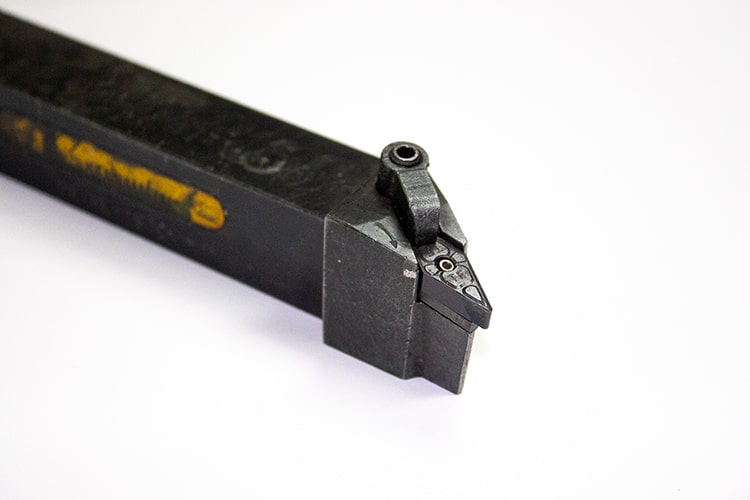
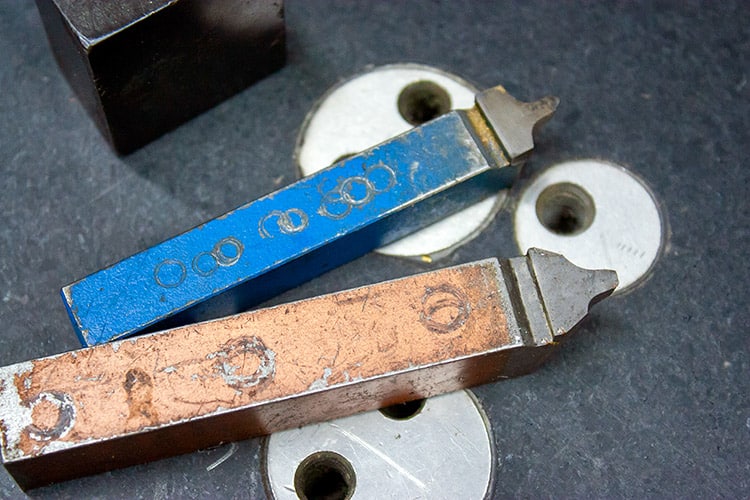
GROOVING
This tool type is used for cutting grooves or forming narrow cavities with a set depth. The shape of the groove or cavity created depends on the shape of the tool bit. There are three types of grooving, OD, ID, and facing. Each of these requires a different configuration. The first, OD (or outer diameter) grooving, should be set with its tip placed slightly below the pieces center line. ID (or inner diameter) grooving, on the other hand, should be done with the tool bit’s tip above the center line. Similarly, face grooving requires the tool bit to be above the center line, however, it should also move in an axial direction.

We hope this helps guide you to making the right tooling choices. At the end of the day the best advice we can give is this, the best way to build you’re vault of tooling and lathe knowledge is to get out there and start turning!
Enjoyed this post? Make sure you sign up for our newsletter to get the latest Lagun Blog Posts. And follow us on all our social media, like Instagram, Facebook, and YouTube, to stay up to date with all things Lagun.
